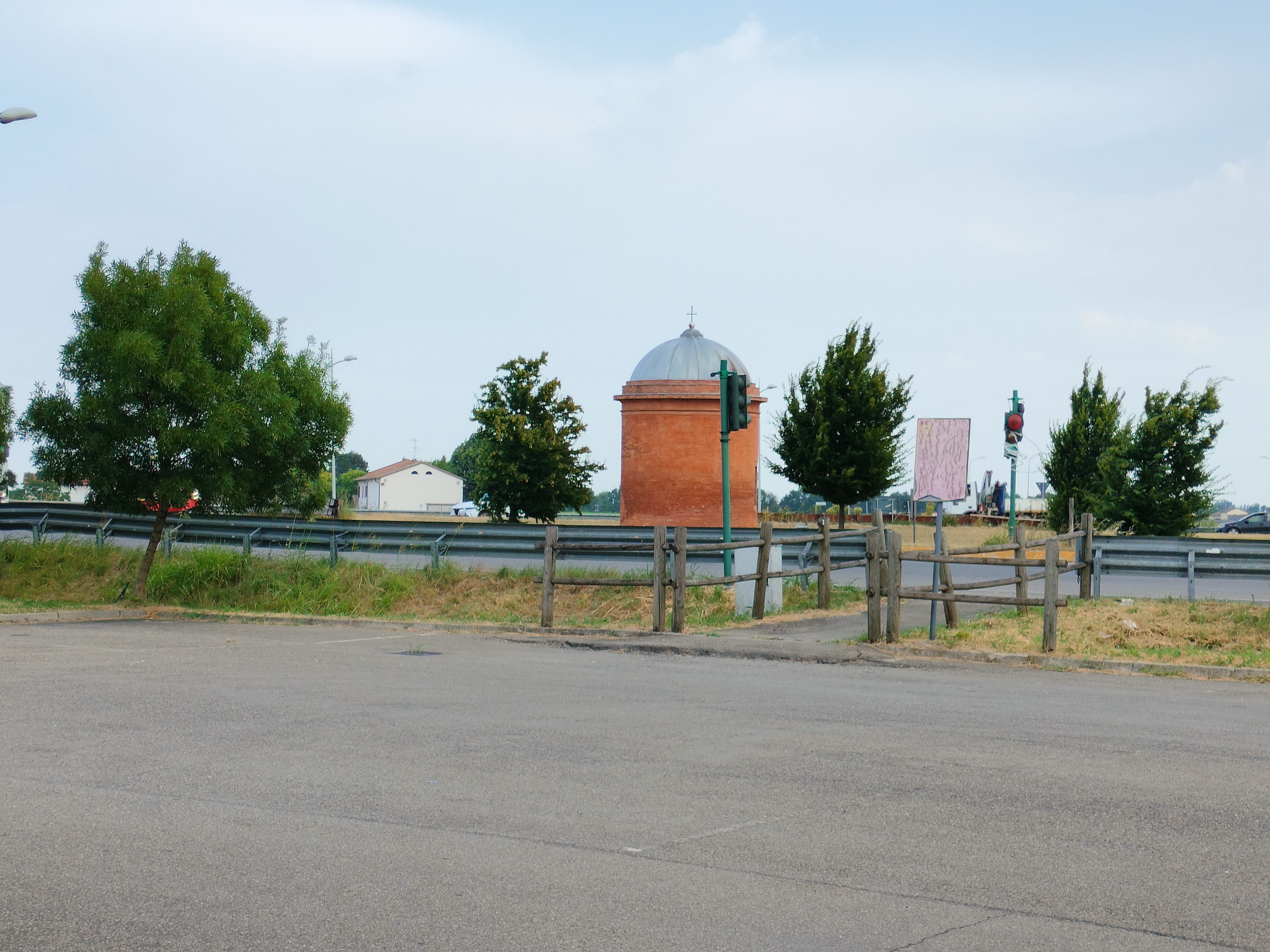La Cappelletta del Duca

La cappelletta del Duca è un oratorio votivo situato all'interno dell'omonima rotatoria situata tra la strada statale 12 dell'Abetone e del Brennero e la strada provinciale 5 Cavezzo-Camposanto, al confine tra i comuni di Medolla e San Prospero, in provincia di Modena e nel territorio del primo.
L'oratorio venne voluto come ex voto da Francesco V ultimo duca di Modena, a seguito dell'attentato a cui scampò nel 1848.
Il 16 novembre 1848 il duca Francesco V proveniva dalla villa Reale di San Felice sul Panaro e, giunto vicino all'osteria delle Tre Torri di Villafranca di Medolla, decise di sgranchire le gambe intirizzite dal freddo. Il giovane Luigi Rizzati, studente mazziniano della facoltà di Farmacia dell'Università di Modena che si trovava nelle vicinanze, vide il duca camminare a piedi vicino alla carrozza e decise all'improvviso di sparargli un colpo di fucile, che però andò a vuoto. L'attentatore venne in seguito arrestato dal maggiore Giovan Battista Guerra e dalla scorta armata del duca, il quale in seguito condannò l'attentatore a soli dieci anni di carcere, ritenendolo psichicamente labile.
Per ringraziare la Divina Provvidenza dello scampato pericolo, il duca Francesco V decise di far erigere una cappella votiva, la cui costruzione si protrasse per diversi anni, tanto che nel 1859 non era ancora terminata e non era ancora avvenuta la consacrazione.
L'incrocio della cappelletta del Duca è stata in passato luogo di innumerevoli incidenti stradali mortali, favoriti dal lungo rettilineo proveniente da Camposanto e dal fatto di essere l'intersezione più trafficata della Bassa Modenese con 13.833 veicoli al giorno nel 2006. Dopo aver attivato un semaforo nel settembre 2002, nel 2008 l'amministrazione provinciale di Modena decise finalmente di realizzare una rotatoria, inaugurata l'8 aprile 2009.

The Duke's Chapel is a votive oratory located inside the roundabout of the same name, situated between State Road 12 of Abetone and Brennero and Provincial Road 5 Cavezzo-Camposanto, on the border between the municipalities of Medolla and San Prospero, in the province of Modena and in the territory of the former. The chapel was commissioned as a votive offering by Francesco V, the last Duke of Modena, following the assassination attempt he survived in 1848. On November 16, 1848, Duke Francesco V was traveling from the Royal Villa of San Felice sul Panaro and, when he reached the Tre Torri tavern in Villafranca di Medolla, he decided to stretch his legs, which had become numb from the cold. The young Luigi Rizzati, a Mazzinian student at the Faculty of Pharmacy of the University of Modena who was nearby, saw the duke walking near his carriage and suddenly decided to shoot him with a rifle, but the shot missed. The attacker was later arrested by Major Giovan Battista Guerra and the Duke's armed escort, who subsequently sentenced the attacker to only ten years in prison, considering him mentally unstable. To thank Divine Providence for his narrow escape, Duke Francesco V decided to have a votive chapel built, the construction of which took several years, so much so that in 1859 it was still unfinished and had not yet been consecrated. To thank Divine Providence for his narrow escape, Duke Francesco V decided to have a votive chapel built, the construction of which took several years, so much so that in 1859 it was still unfinished and had not yet been consecrated. The intersection where the Duke's chapel stands has been the site of countless fatal road accidents in the past, due to the long straight road coming from Camposanto and the fact that it is the busiest intersection in the lower Modena area, with 13,833 vehicles per day in 2006. After installing traffic lights in September 2002, in 2008 the provincial administration of Modena finally decided to build a roundabout, which was inaugurated on April 8, 2009.
